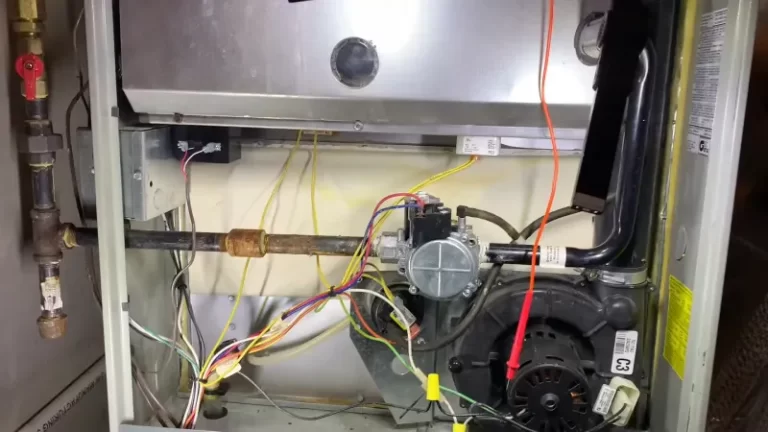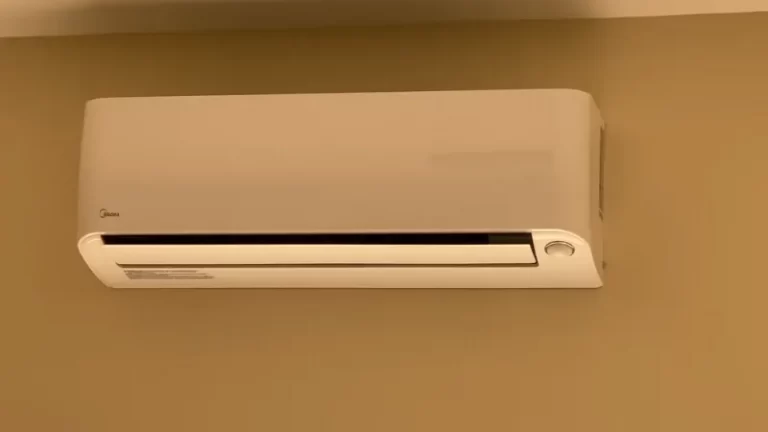Fog in House? Uncover the Spooky Mist & Reclaim Your Air
You walk into your living room and stop. A strange, hazy fog hangs in the air, blurring the edges of your furniture. It’s an unsettling sight that immediately triggers a dozen questions: Is it smoke? Is it a gas leak? Or is it something else entirely?
This mysterious indoor fog is more common than you might think, and while it’s often harmless, it can sometimes be a red flag for serious dangers within your home. Before you panic, it’s crucial to understand what causes this phenomenon and how to clear the air for good.
You'll Learn About
Why Is My House Foggy? Unmasking the Culprits
An indoor fog, or haze, is essentially a collection of tiny particles suspended in the air. These particles can be liquid, like water droplets, or solid, like dust or chemicals. Identifying the source is the first step to solving the problem and ensuring your home is safe.
The #1 Cause: Extreme Humidity and Condensation
The most frequent reason for a foggy house is simple: high indoor humidity meeting a temperature differential. Think of it as creating a cloud inside your home. When warm, moisture-laden air comes into contact with a cooler surface or pocket of air, the water vapor condenses into tiny, visible droplets, creating fog.
Everyday activities are often the biggest contributors to soaring humidity levels. Things like cooking pasta on the stove, running a hot shower, doing laundry, and even breathing release gallons of water vapor into your home’s air daily. Without proper ventilation, this moisture gets trapped, leading to that foggy appearance, especially noticeable on chilly days when the inside of your house is much warmer than the outside.

Backdrafting & Combustion Spillage: The DANGEROUS Fog
While humidity is often the simple answer, a much more dangerous cause of indoor haze is combustion spillage or backdrafting. This occurs when fuel-burning appliances—such as your furnace, gas water heater, fireplace, or even a gas stove—fail to vent properly. Instead of harmful exhaust gases being pushed outside, a negative pressure difference in your home pulls them back inside.
These gases, which include carbon monoxide (CO), nitrogen dioxide, and other particulates, can look like a haze or smoke. This is an incredibly hazardous situation. Carbon monoxide is odorless, colorless, and can be deadly, so if you suspect a combustion issue, it is a true emergency.
Off-Gassing VOCs: The Chemical Haze
Have you ever noticed a strong smell from new furniture, fresh paint, or new carpeting? That odor is caused by Volatile Organic Compounds (VOCs) being released into the air through a process called off-gassing. High concentrations of VOCs can sometimes create a visible chemical haze.
These compounds are found in thousands of household products, including cleaners, air fresheners, building materials, and electronics. While the haze itself might be subtle, it’s a sign that your indoor air quality is compromised. Sometimes, this chemical presence creates a very distinct odor, much like the powerful scent from a permanent marker which can be equally concerning. If you’re dealing with a strange chemical odor, it’s important to investigate that as well; you might find that fixing a Sharpie smell in house involves similar steps to improving overall air quality.
Other Sneaky Sources: Dust, Pollen, and More
Sometimes, what appears to be fog is actually a very high concentration of airborne solid particles. An excessive buildup of dust, pet dander, pollen, or other allergens can create a hazy effect, especially when sunlight streams through a window and illuminates them. This is often a sign that your HVAC filter needs changing or that your home’s ventilation system isn’t adequately filtering the air.
Is Fog in the House Dangerous? Assessing the Risk
The danger level of your indoor fog depends entirely on its source. While a humidity-based fog is mostly a nuisance that could lead to mold over time, a fog from combustion spillage is a life-threatening emergency. Here’s a quick guide to help you assess the situation.
| Type of Fog/Haze | Primary Cause | Potential Dangers | How to Identify |
|---|---|---|---|
| Condensation Fog | High Indoor Humidity | Mold, mildew, water damage, respiratory irritation from mold. | Odorless, feels damp, condensation on windows and mirrors. |
| Combustion Haze | Appliance Backdrafting | Extreme Danger: Carbon monoxide poisoning, respiratory illness. | May have a faint smoky or gassy smell. Often accompanied by soot stains near appliances. CO detector alarm. |
| Chemical Haze (VOCs) | Off-Gassing | Headaches, dizziness, nausea, eye/nose/throat irritation, long-term health risks. | Often has a chemical or “new product” smell. May cause physical symptoms. |
| Particulate Haze | Dust, Dander, Allergens | Allergy flare-ups, asthma attacks, respiratory irritation. | Visible dust particles in sunbeams, may have a “stuffy” smell. |
Your Action Plan: How to Get Rid of Fog in Your House FAST
Once you see a fog in your house, you need to act. Follow these steps to diagnose the cause and clear the air, moving from the most urgent checks to general maintenance.
Step 1: Prioritize Safety—Check for Combustion Leaks Immediately
Before you do anything else, rule out the most dangerous cause. Check your carbon monoxide detectors to ensure they are functioning. If the alarm is going off, or if you suspect a gas leak (smell of rotten eggs) or appliance malfunction, evacuate your home immediately and call 911 and your utility company from a safe location.
Do not wait. Even if you don’t have a CO detector, if the fog is accompanied by a strange smell from an appliance or you feel dizzy or nauseous, get outside right away.
Step 2: Banish Humidity & Improve Ventilation
If you’ve ruled out a combustion emergency, the next likely culprit is humidity. The key to fighting condensation fog is to reduce indoor moisture and increase air circulation.
Use Exhaust Fans: Always run the exhaust fan in your bathroom during and after a shower, and in your kitchen while cooking. This pulls moisture-rich air directly outside before it can spread. Investing in a quality bathroom setup, like a fully enclosed shower, can also help contain steam, but it must be paired with effective ventilation.
Strategic Airing Out: Even on cold days, opening windows for just 10-15 minutes can drastically reduce indoor humidity by allowing moist air to escape and fresh, drier air to enter.
Invest in a Dehumidifier: In naturally damp areas like basements or in homes with persistent humidity, a dehumidifier is your best friend. It actively pulls water vapor out of the air, keeping the relative humidity in a healthy range (ideally between 30-50%).
Step 3: Address Appliance Maintenance and Home Safety
Proper home maintenance is not just about fixing what’s broken; it’s about preventing disasters. This applies to both the air inside your home and the environment outside of it.
Schedule HVAC and Appliance Inspections: Have your furnace, water heater, and any other fuel-burning appliances professionally inspected at least once a year. A technician can ensure they are burning fuel efficiently and venting correctly.
Maintain Overall Home Awareness: Protecting your home’s environment involves being proactive about all potential threats. This mindset extends beyond air quality. For instance, just as you’d address indoor fog, you should also consider external risks. Homeowners on busy streets know this well; learning how to protect corner house from cars is part of a holistic approach to home safety, where you anticipate and mitigate risks before they become problems.
Step 4: Purify Your Air & Reduce Particulates
If your haze is caused by dust or chemicals, it’s time to focus on cleaning your air at a microscopic level. This is crucial for reducing allergens and harmful VOCs.
Upgrade Your HVAC Filter: Switch to a high-quality HVAC filter with a MERV (Minimum Efficiency Reporting Value) rating of 8-13. These filters are better at trapping smaller particles like dust, dander, and pollen.
Use an Air Purifier: A portable air purifier with a HEPA filter is extremely effective at removing airborne particulates and can significantly reduce a hazy appearance in a room. Place it in the most-used areas of your home, like the bedroom or living room.
Choose Low-VOC Products: When painting, buying new furniture, or choosing cleaning supplies, look for products labeled “low-VOC” or “zero-VOC” to minimize the amount of chemical off-gassing in your home.
When to Call a Professional: Don’t Hesitate
While many causes of indoor fog are manageable, some situations require expert help. Do not hesitate to call a professional if you experience any of the following:
- You suspect a combustion leak. Call an HVAC professional or your utility company immediately after ensuring your family is safe.
- The fog persists after trying to reduce humidity. An HVAC specialist can assess your home’s ventilation system for underlying issues.
- You notice signs of mold or excessive moisture damage. A mold remediation expert can safely handle the removal and address the source of the moisture.
Seeing a fog in your house can be alarming, but it’s a problem you can solve. By methodically ruling out dangers, identifying the source, and taking clear, actionable steps, you can banish the haze and ensure the air in your home is clean, clear, and—most importantly—safe to breathe.


